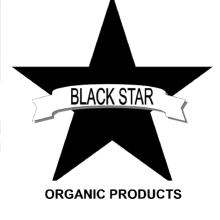352.346.9216 | blackstarorganic@gmail.com
The utilization of vermicomposts in horticulture and agriculture
Norman Q. Arancon and Clive A. Edwards
Soil Ecology Laboratory
The Ohio State University
Columbus, OH, U.S.A.
Norman Q. Arancon and Clive A. Edwards
Soil Ecology Laboratory
The Ohio State University
Columbus, OH, U.S.A.
Vermicomposts are organic materials, broken down by interactions between earthworms and microorganisms,
in a mesophilic process (up to 25 C), to produce fully-stabalized organic soil amendments with low C:N ratios.
They have a high and diverse microbial and enzymatic activity, fine particulate structure, good moisture-
holding capacity, and contain nutrients such as N, K, P, Ca and Mg in forms readily taken up by plants.
Vermicomposts can have dramatic effects on the germination, growth, flowering, fruiting, and yields of crops
independent of the availability of nutrients. We have demonstrated dramatic effects of vermicomposts
produced from pig and cattle manures and food and paper washes on a range of ornamentals and vegetables
in the greenhouse. The crops tested include petunias, marigolds, asters, and chrysanthemums but there is
little doubt that they will also increase growth of other greenhouse crops. In most of our greenhouse
experiments we have substituted vermicomposts into soil-less growth media and vegetable crops tested in the
greenhouse and field include: tomatoes, cucumbers and peppers. Fruit crops tested in the field include
strawberries, raspberries, and grapes; all with very significant effects on yields independent of nutrient
availability.
There is a consistent pattern of plant responses to vermicomposts. Usually growth and yields are improved
more by low substitution or application rates than by large rates. Growth in 100% vermicompost is usually less
than in substitution rates of 20%-40%. This can be partially explained by possibilities for large amounts of
inorganic salts in 100% vermicomposts.
However, we have demonstrated conclusively that there are large amounts of plant growth hormones such as
indole acetic acid (IAA), kinerin or gibberellins, and plant growth regulators such as humates and fulvates in
vermicomposts. These are produced by the greatly increased microbial activity in vermicomposts compared
with that in the parent organic wastes because it is well-established that microorganisms can produce plant
growth regulators. Our proven hypothesis is that plant growth hormones such as IAA which are very soluble
and breakdown in UV light, become absorbed on to the humates and released slowly to promote growth.
We have also demonstrated that liquid extracts from vermicomposts which are termed vermicompost ‘teas’ can
also promote plant growth when they watered around plants. Finally, we have demonstrated suppression of a
wide range of plant pests by vermicomposts and used ‘teas’. These include biting caterpillars, beetles such as
cucumber beetles, and sucking arthropods such as scale insects, medley bugs, aphids, and spider mites. The
vermicomposts not only make the plants less attractive to pests but also decrease their reproductive rates.
Vermicomposts also suppress plant pathogens such as Pythium, Rhizocronia, Plectosporium, Verticullium. We
have also recorded very significant suppression of plant parasitic nematode populations and nematode crop
damage by vermicomposts. The nematodes we studied most intensively were Heteradera (ast nematode) and
Meliodogyne (root kind of nematode).
Clearly, vermicomposts are very valuable tools in crop production and pest and disease management.
